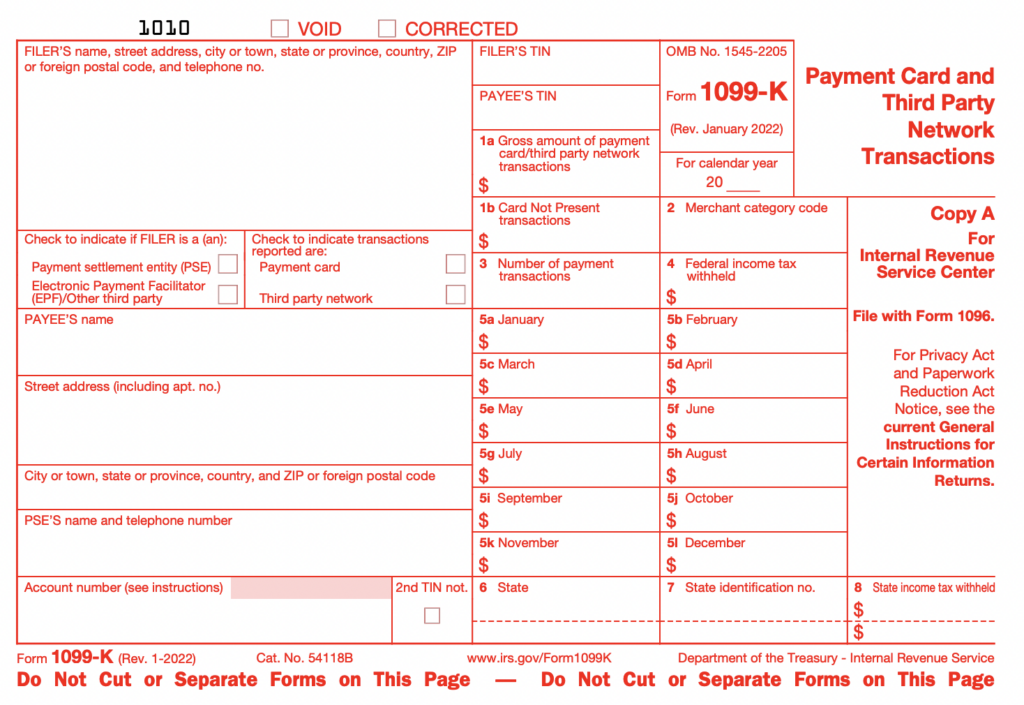1099-Ks for Small Sellers
Last year, the IRS made a major change that will send a LOT more 1099-Ks to small online sellers.
Prior to this change, only sellers who had at least $20,000 in gross receipts across more than 200 transactions in a year would received a 1099-K. Some states have already lowered the threshold.
As part of the American Rescue Plan of 2021, this threshold was changed to a mere $600 per year. That means nearly all online sellers should expect to receive a 1099-K going forward. The change was originally intended to take effect for the 2022 tax year, but small sellers just got a slight reprieve as the IRS pushed back implementation by a year.
What’s the big deal?

The primary concern for many sellers is that a 1099-K means they will owe taxes on the amount reported in Box 1a (see the image above.) Sellers are also concerned about reporting the correct amount on Line 1 of their Schedule C (see image below) and matching that amount to their 1099-K.

Avoiding mismatched numbers
Here are some things that could cause differences and what you can do to avoid them:
Shipping
Box 1a of the 1099-K WILL include shipping amounts that you collect from the buyer. You should make sure that these amounts are also included in Line 1 of your Schedule C. Additionally, you’ll want to be sure you’re tracking and reporting all of your actual shipping costs as expenses.
Transaction Fees
Box 1a of the 1099-K WILL NOT include any fees that may have been taken out of your order (e.g. final value fees, transaction fees, etc.) This means the amount you actually receive in your bank account will be less than what gets reported to the IRS. Therefore, it’s very important to keep track of all of your selling fees and report them as expenses.
Refunds and Discounts
Like with fees, Box 1a WILL NOT include refunds and discounts. It is up to you to keep track of these separately, and place the total amount in Line 2 of your Schedule C tax form.
Multiple channels and multiple payment providers
It’s important to remember that each payment platform will be sending 1099-Ks to any sellers with more than $600 in annual transactions. If you sell on multiple channels, and they use different payment processors, you are likely to receive multiple 1099-Ks. In an ideal world, the sum of the 1099-K amounts should equal Line 1 on your Schedule C. However, this assumes that each payment platform treats all of these numbers the same. If anyone finds examples where this isn’t true, please shoot us an email and we’d be happy to dig into it and see what’s going on, then share with the broader community.
What about Sales Tax?
There seem to be many questions about whether sales tax should be included in Box 1a. Based on 1099-Ks shared with us by customers, and language from eBay’s help website, sales tax that is both collected and remitted for you will not be included.
Good bookkeeping makes this much easier to handle
While you can’t control what gets reported to the IRS, you can control what you file on your tax return. You can ensure the numbers in your tax return match what the IRS sees through good bookkeeping practices. If you are looking for help on that front, consider Seller Ledger, a bookkeeping program that’s specifically designed for online sellers. Seller Ledger’s automated solution breaks out those shipping, refund and fee details and make sure they roll up to the correct tax lines to match the 1099-K.
Disclaimer
The content in this page should not be construed as legal or tax advice. Please consult an attorney or tax professional regarding your specific tax situation.
